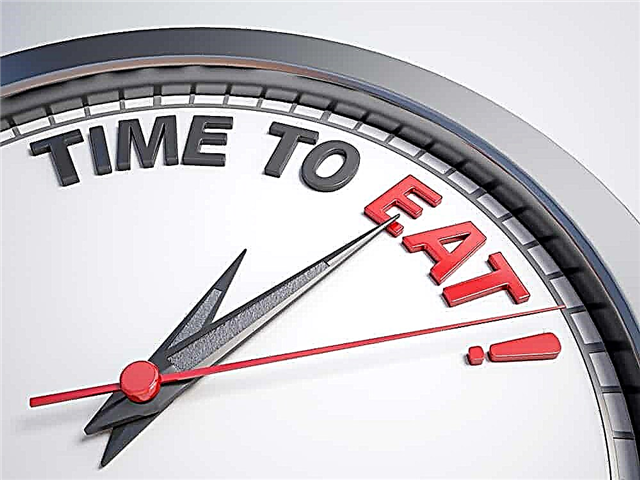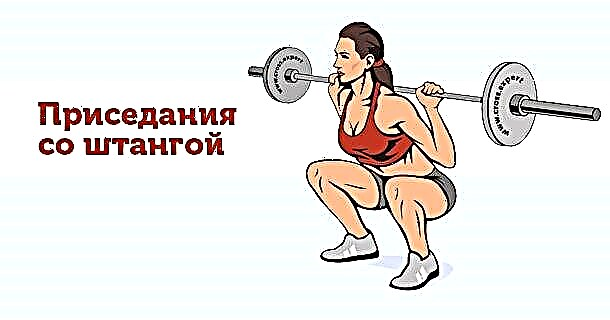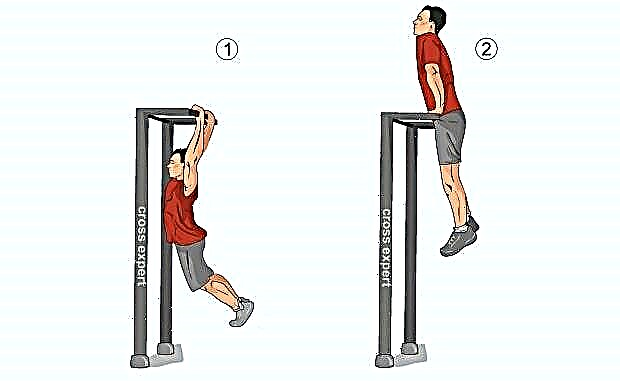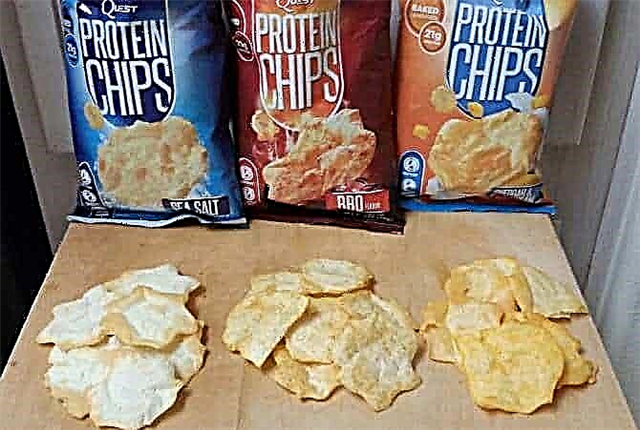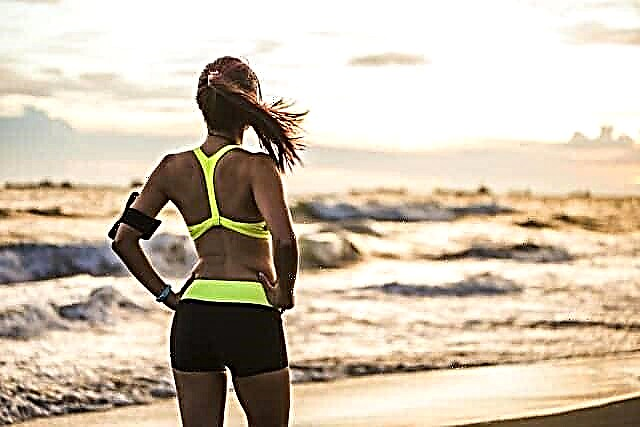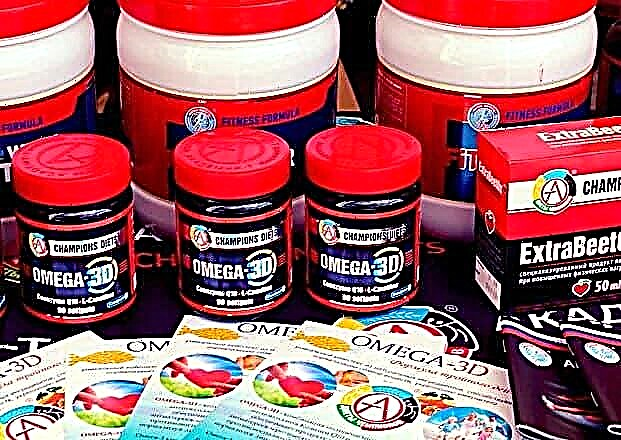The deadlift is one of the most common exercises in all sports disciplines. It is actively used in powerlifting and crossfit, and is also a good auxiliary exercise to increase the overall strength and power of the athlete, so mixed martial arts fighters, fans of boxing and oriental martial arts also do not bypass it, thereby gaining insane strength, increasing the overall athletic potential. Today we will tell you how to do deadlift correctly, as well as about the main types, techniques, standards and alternatives to this exercise.
What is deadlift?
What is this exercise - deadlift? In short, this is the lifting of the barbell (or other weights) from the floor, performed by the work of the muscles of the legs and back. This exercise perfectly contributes to a set of muscle mass, an increase in strength indicators, since here we can work with serious weights, involving almost all muscle groups in our body. Deadlift is rightfully considered a classic basic exercise, which no athlete can exclude from his program.

Beginners, as well as experienced lifters, are strongly encouraged to begin their deadlift workout with a thorough warm-up and stretching. The movement should be powerful and synchronous, each muscle should be included in the work exactly when it is necessary, and it is unlikely that it will be possible to perform the deadlift technically correctly without proper preparation of our muscles and articular-ligamentous apparatus for heavy strength work.
There are 3 main types of deadlifts: classic, sumo and Romanian. Each of them is complemented by a different variation of weights (barbell, kettlebell, dumbbells, Smith machine, grip bar, etc.) We will talk about each type separately.
The difference between them lies in the position of the arms and legs, due to which the load is more placed on the back or legs. There are also several additional types of this exercise that are of no less interest to us, for example:
- deadlift on straight legs (Romanian deadlift);
- deadlift in the Smith machine;
- deadlift with a trap bar;
- deadlift with dumbbells.
We will dwell on each of these types in more detail in this article.
Deadlift Equipment
A conversation about the deadlift would be incomplete without mentioning the current records in this movement. Deadlifts can be performed without equipment and with equipment. The question arises: what can be considered equipment? Overalls? Straps? Or even a belt? We share the most conservative position on this issue, namely: equipment is what increases your result, so straps, overalls and knee-wraps can be safely attributed to the equipment division.
With a belt, a slightly different story Of course, an athletic belt helps to lift a little more weight when performing deadlifts, but its primary function is to protect you from umbilical hernia or lower back injuries, so its use is permissible and often even necessary in unprotected powerlifting, and this does not contradict the rules of the federations. There are no more unique people like Konstantin Konstantinov who are capable of pulling more than 400 kg without a belt, so it is better to take care of your health in advance and not neglect the use of a belt. Cross.expert - for safe sports.
Deadlift records
One way or another, the current absolute record in deadlift belongs to Icelander Benedict Magnusson (weight category over 140 kg). 460 kg were submitted to him. There are two more impressive records, however, they were made using straps and jumpsuits. However, this does not detract from their importance:
- Briton Eddie Hall won 500 kg (weight category over 140 kg), watch the epic video of this event below;
- Russian Yuri Belkin submitted 450 kg (ATTENTION, weight category up to 110 kg).
Which of these is more significant for the development of sports in general and setting the right example for novice athletes, decide for yourself. My opinion is the following: Belkin's result is simply space. We wish the athlete the establishment of new world records and that injuries bypass him.
Types and technique of execution
Next, we will dwell on the types of deadlifts, of which there are much more than an inexperienced athlete might think. Let's start, of course, with the classic version.
Classic deadlift
The classic version of the deadlift is perhaps the most common in CrossFit, power extreme and powerlifting. There is no exact information about the sport discipline in which it originated, but most likely it was weightlifting - the first part of the clean and jerk represents this movement.

So, how to do deadlift correctly step by step (execution technique):
- With the classic deadlift, the athlete takes the bar shoulder-width apart, the legs are slightly narrower, the feet are parallel to each other.
- The bar is as close to the shins as possible, so it is recommended to use gaiters when performing deadlifts.
- The shoulder blades and shoulders are laid back slightly.
- The movement begins with the movement of the legs - the bar must be "ripped" by the effort of the quadriceps and buttocks. When the barbell has passed 20-30% of the amplitude, the athlete should begin to move with his back, fully straighten in the lower back and lock in the final position.
A short video of the deadlift technique:
Most of the load in the classic deadlift falls on the back muscles (namely, the extensors of the spine and trapezius muscles), therefore this option is recommended for athletes whose back muscles prevail over the leg muscles. There are also a number of anatomical features of the structure of the body (for example, long arms or short torso), in which it is worth performing just the classic deadlift.
The main mistake of beginners here is rounding the back when lifting (“hump” deadlift). By doing so, you risk getting a serious back injury and forgetting about athletic longevity.
Pay careful attention to practicing the correct exercise technique so you can get the most out of this movement.
A detailed video about the correct execution of the classic deadlift, analysis of typical beginner mistakes:
Sumo deadlift
With the sumo deadlift, the load is shifted more to the quadriceps and adductors of the thigh. The latissimus dorsi, the extensors of the spine, and the abdominal muscles bear a greater static load, since the extension in the lumbar spine is much less here than in the classical version.
When pulling sumo, the athlete takes the barbell slightly narrower than shoulder level, and, on the contrary, puts his legs wider. How wide depends on the level of stretch. It is clear that the wider the legs are apart, the shorter the amplitude will be, and, consequently, the higher the result will be, however, if you do not have sufficient stretching, if your legs are too wide, you run the risk of stretching or tearing the adductor muscles. Therefore, it is recommended to start with an average setting of the legs (slightly wider than the shoulders) and gradually increase it, not forgetting to pay special attention to stretching.

The movement in the lower back when pulling sumo is minimal, we do not need to "straighten" with the barbell, as in the classic version. We need to lift it with the maximum effort of the leg muscles, without rounding the back and not leaning forward.
The most common mistake a beginner makes when doing sumo deadlifts is a large movement in the back. At the lowest point, they lean over the bar and tear it off with the simultaneous effort of the back and legs. This is fundamentally wrong: when pulling sumo, we include the back in work only in the upper part of the amplitude (about the last 20% of the movement), working with serious weights. If it is more convenient for you to transfer part of the load to the lower back, it is better to perform the deadlift in the classic version, pay sufficient attention to working out the technique, and personal records will not be long in coming.
The sumo deadlift is more suitable for athletes with well-developed legs and buttocks. Great for athletes with a long torso and short arms.
Deadlift on straight legs (Romanian deadlift)
The Romanian deadlift has nothing to do with powerlifting, but it is an excellent isolated exercise for developing the glutes and hamstrings. The movement is performed on straight legs and with the back fixed by moving the buttocks back. Working in such an amplitude, the hamstrings stretch perfectly in the positive phase of the movement and contract in the negative phase.

In this exercise, the neuromuscular connection is primary, and not the weight being lifted, so I do not recommend doing the deadlift on straight legs with a lot of weight, if at the same time you do not feel the accentuated load on the required muscle groups. In addition, when working with heavy weights, there is a risk of injury to the hamstrings, which stretch as the pelvis is pulled back. This can stunt your squat and deadlift progress as recovery will take at least several weeks.
Smith Machine Deadlift
This is not the most common exercise, but it also has obvious benefits. The Smith machine gives us the ability to work on the trajectory given by the hinges, so it is easier for us to focus on the biomechanics of movement and "catch" the contraction of the desired muscles.
In addition, in Smith it is very convenient to set the limiters to the desired level and due to this, work in a shortened amplitude (performing a kind of thrust from the skirting boards). The shorter range allows us to get used to heavy lifting, improve grip strength, and prepare a good foundation for increasing strength in deadlifts and other basic exercises.

Bar deadlift
If your gym has a chatter bar, rejoice! In Russia, this is a great rarity, but in vain, because this bar allows us to work in a slightly different amplitude and increase our strength indicators. The grip is in the shape of a rhombus, inside which there are grip handles. At the same time, the palms are parallel to each other, and the handles themselves are at the level of the body, due to this it is much easier to keep your back straight during the lift, which many people lack when performing the classic deadlift.
Read more about the technique of performing the deadlift with a trep bar.

Dumbbell Deadlift
An obvious plus in working with dumbbells is a longer amplitude, since the bar of the dumbbell will be located below the bar of the bar. Therefore, deadlift with dumbbells is quite a place to be in the training process of a crossfit athlete, since it is convenient to combine it with push-ups from dumbbells or thrusters.

In addition to the semblance of the classic deadlift, there is an exercise called "plie squats", which is popular among many girls who are fond of fitness. The movement is similar to a sumo deadlift, but we do not put the dumbbells on the floor and work non-stop in the upper position in a shortened amplitude, keeping the adductors of the thigh in constant tension. The back should be kept straight throughout the entire exercise, the weight of the burden is selected individually, but it should be borne in mind that in such isolated exercises there is practically no point in working less than 10-15 repetitions. Here we are working on target muscle groups, rather than setting power records.
Deadlift standards
Separate deadlift competitions are held under the auspices of all powerlifting federations operating in Russia (FPR, WPC / AWPC, ASM Vityaz, etc.). At the same time, there is no distinction according to which style the athlete should pull: sumo or classic. For many athletes, this moment causes indignation, someone demands to introduce a separate division for sumo pulling, someone demands to completely ban sumo pulling, and invalidate the current records, or create a separate federation where everyone will pull in sumo ... These statements are heard, in my opinion, just absurd. Federation rules do not regulate any kind of deadlift as the only correct one, and each athlete has the right to choose the style in which he is able to show the greatest result, at his own discretion.
Below are the men's deadlift guidelines from what is arguably the most popular federation among amateur athletes, the AWPC (Doping Controlled Division). The deadlift standards of this federation are quite democratic, so any more or less prepared athlete will not find it difficult to prepare for some regional competition and complete the first adult category for a start. And then - more. Therefore, if you have already achieved certain results in the deadlift, try to confirm them in competition. An adrenaline rush and an unforgettable experience are guaranteed.
Bit standards for men in deadlift without equipment (AWPC):
| Weight category | Elite | MSMK | MC | CCM | I rank | II category | III category | I jun. | II jun. |
| 52 | 197,5 | 175 | 152,5 | 132,5 | 115 | 105 | 90 | 75 | 60 |
| 56 | 212,5 | 187,5 | 162,5 | 142,5 | 125 | 115 | 97,5 | 82,5 | 65 |
| 60 | 225 | 200 | 172,5 | 150 | 132,5 | 120 | 105 | 87,5 | 70 |
| 67,5 | 247,5 | 217,5 | 190 | 165 | 145 | 132,5 | 112,5 | 95 | 75 |
| 75 | 265 | 232,5 | 202,5 | 177,5 | 155 | 142,5 | 122,5 | 102,5 | 80 |
| 82,5 | 277,5 | 245 | 215 | 185 | 162,5 | 150 | 127,5 | 107,5 | 85 |
| 90 | 290 | 255 | 222,5 | 195 | 170 | 155 | 132,5 | 112,5 | 90 |
| 100 | 302,5 | 267,5 | 232,5 | 202,5 | 177,5 | 162,5 | 140 | 115 | 92,5 |
| 110 | 312,5 | 275 | 240 | 207,5 | 182,5 | 167,5 | 145 | 120 | 95 |
| 125 | 322,5 | 285 | 247,5 | 215 | 190 | 175 | 150 | 125 | 100 |
| 140 | 332,5 | 292,5 | 255 | 222,5 | 192,5 | 177,2 | 152,5 | 127,5 | 102,5 |
| 140+ | 337,5 | 300 | 260 | 225 | 197,5 | 182,2 | 155 | 130 | 105 |
Download and print the table, if necessary, by following the link.
For women:
| Weight category | Elite | MSMK | MC | CCM | I rank | II category | III category | I jun. | II jun. |
| 44 | 127,5 | 115 | 100 | 85 | 75 | 70 | 60 | 50 | 40 |
| 48 | 140 | 122,5 | 107,5 | 92,5 | 82,5 | 75 | 65 | 52,5 | 42,5 |
| 52 | 150 | 132,5 | 115 | 100 | 87,5 | 80 | 70 | 57,5 | 45 |
| 56 | 157,5 | 140 | 122,5 | 105 | 92,5 | 85 | 72,5 | 60 | 47,5 |
| 60 | 165 | 147,5 | 127,5 | 110 | 97,5 | 90 | 77,5 | 62,5 | 50 |
| 67,5 | 177,5 | 157,5 | 135 | 117,5 | 102,5 | 95 | 82,5 | 67,5 | 55 |
| 75 | 185 | 165 | 142,5 | 125 | 110 | 100 | 85 | 72,5 | 57,5 |
| 82,5 | 192,5 | 170 | 150 | 130 | 112,5 | 105 | 90 | 75 | 60 |
| 90 | 200 | 177,5 | 152,5 | 132,5 | 117,5 | 107,5 | 92,5 | 77,5 | 62,5 |
| 90+ | 202,5 | 180 | 155 | 135 | 120 | 110 | 95 | 80 | 65 |
Download and print the table, if necessary, by following the link.
Alternative deadlift exercises
What can replace deadlift? I must say right away that the following information is intended for those athletes who cannot perform deadlifts due to medical contraindications, but want to work out the target muscle groups using other exercises.
For everyone else, the answer is: NOTHING.
The deadlift is a multi-joint exercise that engages almost every muscle in our body. And the effect that it has on our strength and muscle mass is unlikely to be replaced by hyperextensions, barbell bends or exercises for the adductors of the thigh muscles. Therefore, if you cannot perform deadlifts due to the fact that axial load on the spine is contraindicated for you, include the following exercises in your training process:
- Pull-ups on the bar - Probably the best exercise in the world for gaining back muscle mass and giving a V-shaped silhouette. It is important to try to carry out movement by contracting the broadest muscles, while reducing and spreading the shoulder blades, minimally including the forearms and biceps. This will help you get the most out of this exercise. Do other lats where the axial load is minimal (wide-grip vertical pulldown, narrow-grip horizontal pulldown, pullover from the upper pullover, hummer deadlifts, etc.) in order to stress the muscles and create the prerequisites for muscle growth.
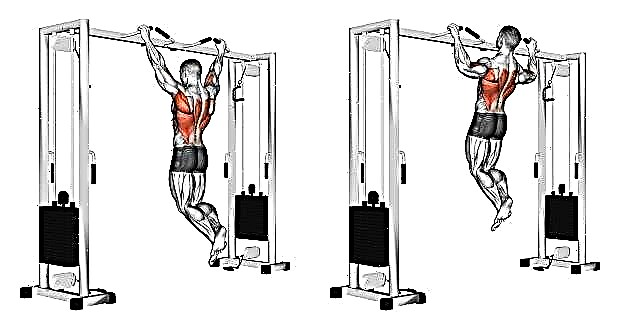
© Makatserchyk - stock.adobe.com
- Hyperextension - an exercise that perfectly develops the main muscle group that works with the classic deadlift - the extensors of the spine. It is noteworthy that the axial load in it is practically zero, therefore it is strongly recommended to be performed not only as an alternative to deadlift, but also as an addition to it, and as a general strengthening preventive exercise, and as an exercise aimed at rehabilitation of the injured lower back.

© Makatserchyk - stock.adobe.com
- Reverse hyperextension - a type of hyperextension, where the athlete contracts the target muscle group by lifting the legs, and not the body. The load here is more directed to the lower part of the extensors of the spine, the region of the sacrum receives the maximum blood flow.
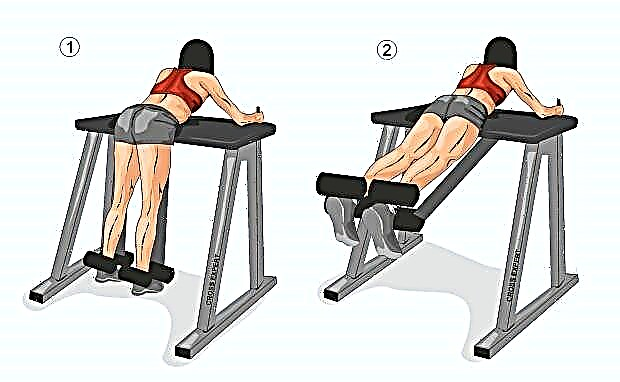
- Information and breeding while sitting in the simulator - exercises that can be used to separately load the adductor muscles of the thigh and buttocks without axial load on the spine. Therefore, if the sumo deadlift is contraindicated for you, you may well include these two exercises in your arsenal.

© Makatserchyk - stock.adobe.com
How to improve your deadlift performance?
Your deadlift performance, be it classic or sumo, depends on two aspects:
- the acceleration you give to the bar;
- adherence to correct technique at maximum weights
Boom acceleration
The more acceleration you set when breaking the bar, the easier it will be for you to complete the movement. Therefore, you need to pay special attention to the explosive strength of the legs and back, and you should include the following exercises in your training process that will help you make the deadlift more explosive and faster:
- Squats with a pause at the bottom;
- Jumping onto the box;
- Standing up with a barbell from a saddle;
- Squats with a barbell on a bench;
- Jerk pull-ups.
- Deadlift with a pause at the knee.
Correct technique
As for the correct technique, it is purely a matter of time and experience. It is necessary to separately work out deadlift in full, short and extended amplitudes.
Working in a shortened amplitude (pull from skirting boards), we can perform an exercise with a lot of weight, shifting the load on the entire array of back muscles. In addition, we develop grip strength and psychologically get used to maximum weights.

Long Range Working (Pit Pull), we work with slightly less weight, but we perform the movement, emphasizing the load in the quadriceps. This will inexorably lead to an increase in power indicators in the deadlift in full amplitude, since the pull from the hole, of course, will be given harder both physically and psychologically.

In addition, there are several other conditions for good traction.
The first is stretching. This is especially important for those athletes who perform sumo-style deadlifts. It is necessary to pay special attention to the fascia of the adductor muscles of the thigh and quadriceps - they must be elastic and mobile, perform the twine variations that are most convenient for your structure. So you will save yourself from possible injuries and will be able to work in optimal amplitude without experiencing discomfort or pain in the muscles and tendons.
Do not forget about stretching the torso, perform various exercises aimed at stretching the lats, chest, lower back or abdominals, at different angles, not a single muscle of your body should be "wooden", then the deadlift will become comfortable and absolutely natural for you from the point of view of anatomy and biomechanics of movement.
Isolated work on target muscle groups is equally important.working with deadlift. For example, you should perform pull-ups, barbell or dumbbell rows, hyperextensions, “boat” to keep your back muscles ready for strength work. Don't forget about our “foundation”. Additionally, strengthen your leg muscles, squat with a barbell, do leg presses, seated extensions, and other exercises for the quadriceps and hamstrings.
Crossfit complexes
The deadlift is a great tool not only for the powerlifter, but also for the crossfit athlete, so do not bypass this exercise. By doing it, you will multiply the training tonnage and intensity, develop strength and muscle mass, and the level of physical fitness will grow from training to training. Below are a few functional complexes that you can try for your upcoming workout. Be careful: this task is clearly not for beginners.
| Shark Attack | Perform 50 pullups and 50 classic deadlifts in a minimum amount of time. |
| Lucy | Perform 10 sumo deadlifts, 10 box jumps and 30 spring jumps. Only 5 rounds. |
| Big gun | Perform 15 repetitions of the bench press, 30 squats, and 50 deadlifts with a barbell equal to the lifter's own weight. There are 3 rounds in total. |
| Deadlift monster | Perform 20 classic deadlifts, 20 sumo deadlifts, and 20 dumbbell lunges. 4 rounds in total. |
| True till death | Perform a ladder from 1 to 20 repetitions of pull-ups on the bar and classic deadlifts. |





